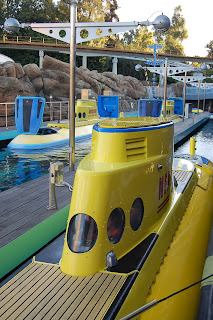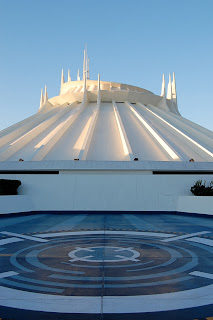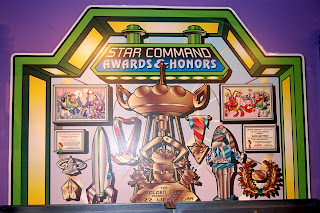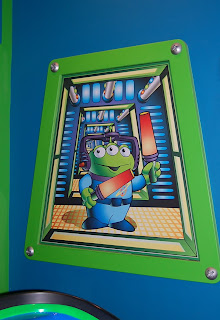Today is Friday, April 1 - April Fool's Day - a day when many a Disney website or blog runs phony stories about developments in and around the Walt Disney Company. Well... I won't be doing that. Instead, I present to you this week's final series of vintage Disney Parks photos. Each tells a story that, if not for the photographic evidence, might seem just as far fetched as an actual April Fool's Day prank. Enjoy.
Epcot replaces Disney Characters with
Larger-than-Life People of the World
When EPCOT Center opened in 1982, it was the first Disney Park designed outside the Disneyland mold. To help further differentiate the park from the Magic Kingdom, it was decided the traditional Disney characters would not appear in EPCOT Center (it was actually this decision that led to the first wide-spread use of "Hidden Mickeys"). Instead, the new park would feature a cast of characters all its own, from Dreamfinder and Figment in Future World to the People of the World in World Showcase. These oversize, doll-headed characters were adapted from America on Parade, which ran at the Magic Kingdom in the mid-70s. Brought to EPCOT Center, they were dressed in international costumes and set out to pose with guests around the World Showcase Lagoon. It wasn't long, though, before visitors to the park expressed their expectation that Mickey and friends would be on hand, and the People of the World were retired in favor of the Fab Five in "futuristic" silver jumpsuits.
"Three Little Pigs" Musical Added in Expansion
of Fantasyland at Magic Kingdom Park
As part of an early effort to add extra offerings to the Magic Kingdom (significantly more modest than the current park expansion), the Fantasy Faire Stage was created in the back of Fantasyland to host musical performances starring popular Disney characters. Various shows telling stories ranging from "Winnie the Pooh" to the "Three Little Pigs" graced the stage over the years. Even as recently as the mid-90s, this spot was home to Disney Magic Music Days guest performers and Miss Minnie's Country Christmas during holiday events. The Fantasy Faire Stage closed for good in 1996, to be replaced by Ariel's Grotto, and the site is now being transformed once again into part of Belle's village for New Fantasyland.
You're not seeing things. This is the dry riverbed of the Rivers of America in Frontierland at Disneyland, with the guide rail for the Columbia and Mark Twain visible on the ground. This level of refurbishment on the park's main river has only been undertaken a handful of times. This particular photograph is from early-1992, when the original infrastructure was added for a new Disneyland nighttime spectacular set to debut that spring - Fantasmic!
In the early years of the Walt Disney World Resort, when the Magic Kingdom was the only park to visit, guests crossing Seven Seas Lagoon were often treated to surprise appearances by the Disney characters. Favorites like Goofy and Mr. Smee could be seen water skiing alongside the ferries on their way to the park. More than just entertainment value, these stunts also served as a promotion of sorts of the resort's varied recreation offerings, something new that had never been available at Disneyland.
It's true! Full disclosure, though: The cantina structure was temporary, only built for the official grand opening ceremonies for Star Tours held on January 14, 1990. Look closely at the photo, and you can see the band playing (that's Figrin D'an and the Modal Nodes for you die-hard Star Wars fans out there). Michael Eisner and George Lucas presided over the day's events. Star Wars stars Mark Hammill and Carrie Fisher were also in attendance. Even though Darth Vader and his Imperial Guard made an appearance atop the attraction building to try and stop the proceedings, everything opened according to plan. Now, twenty-one years later, we await the debut of the next chapter with Star Tours: The Adventures Continue, opening May 20.


















































